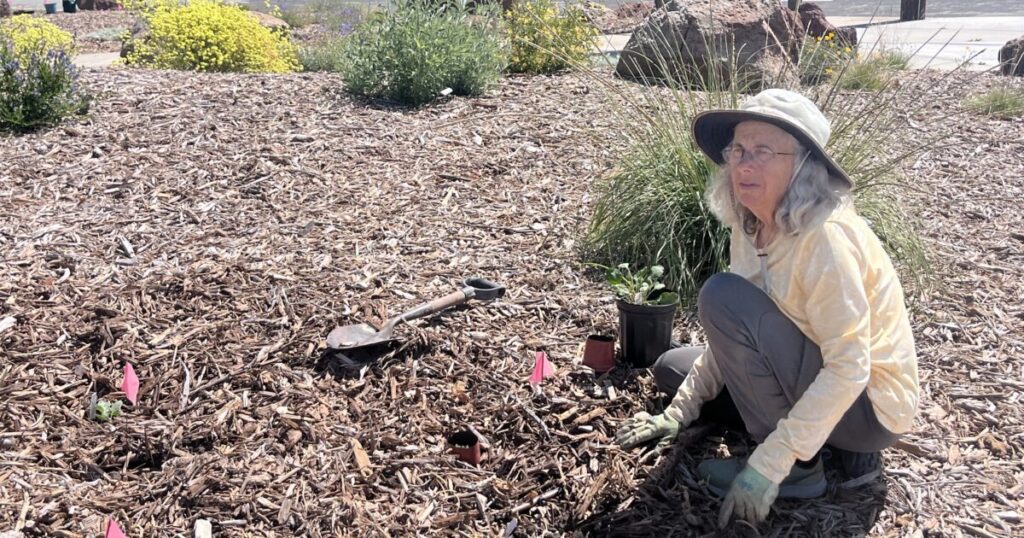San Jose Parks, Recreation and Neighborhood Services continues to wrestle with budget cuts and backlogs, and the upcoming year isn’t going to be easy.
The city is facing a projected 2025-26 budget deficit of $35.6 million — and the parks department won’t go unscathed. The budget is expected to decrease park funding by $2.5 million next year, according to Sheena Talosig, spokesperson for the department.
“We do everything we can to stretch our resources — grants, partnerships, volunteers and contractors all help us maintain parks,” she told San José Spotlight. “We’re also always looking for ways to be more efficient, but the bottom line is that we just don’t have enough staff to meet the need. With a $550 million maintenance backlog, it’s clear that sustainable funding for park staffing is critical to keeping our parks safe, clean and accessible.”
Maintenance and preserving parks is at the department’s core, Avi Yotam, deputy parks director, said at a May 12 Almaden Valley Community Association meeting. He said the $2.5 million in budget cuts includes the loss of $100,000 for community forestry.
Other cost savings will come from the city’s closure of Yosemite Family Camp due to wildfire damage this summer, with a one-time savings of $240,000 while being repaired, Yotam said. The City Council is also considering the privatization of Lake Cunningham Action Sports Camp, a skateboard and bike park, which could save the city $879,000 annually.
To ensure equity in park upkeep, the department uses the Healthy Places Index to guide its decisions and in prioritizing maintenance in neighborhoods with the greatest need, Talosig said.
She added the department is looking at how park funding can be restructured, after the city cut developer fees that took funding away from parks. This summer, the department will begin community outreach to better understand what people want and need from city parks. The feedback will help shape a potential ballot measure to secure sustainable maintenance funding and a new park master plan focused on how to make the system more flexible and equitable citywide, she said.
The existing maintenance backlog has impacted community centers, park grounds, playgrounds, restrooms, picnic areas, sports facilities and trails.
City parks receive funding from construction, property transfer taxes, development impact fees, general fund allocations, gifts, grants and partnerships. Although the department receives $40 million annually from the construction taxes, councilmembers — in an effort to accelerate housing construction — have reduced funding allocations.
Yotam said the Parks and Recreation Master Plan will balance immediate maintenance needs with long-term aspirations.
“Using our California Park and Recreation Society’s standards for park maintenance, we assessed how many staff we ought to have as a park and rec department for the city,” he said. “We found we’re about 100 people short.”
Kathy Kleinsteiber has volunteered with planting pollinator gardens at local parks for years. The city asked her to choose plants and design a pollinator garden at Cahalan Park, which she maintains with other neighborhood volunteers.
“It would be nice to give money to parks because they don’t have enough money to maintain them,” Kleinsteiber told San José Spotlight. “Most of our parks look like heck. The budget cuts are making it even worse.”
Parks Manager Veronica Schulte said the park service depends on volunteers and is pursuing additional grants. In fiscal year 2002–03, they had about 227 full-time staff in park maintenance covering 1,475 acres, she said. This dropped to 183 full-time staff responsible for 1,801 acres of park land during this past fiscal year.
“Fast forward to this year, we have more acreage but less staff. We’re stretched very thin over the additional parks,” she said. “Having more parks means less services over time for each of the parks on a day-to-day basis, because they have more to do on their routes than they did before with less people.”
Contact Lorraine Gabbert at [email protected].



